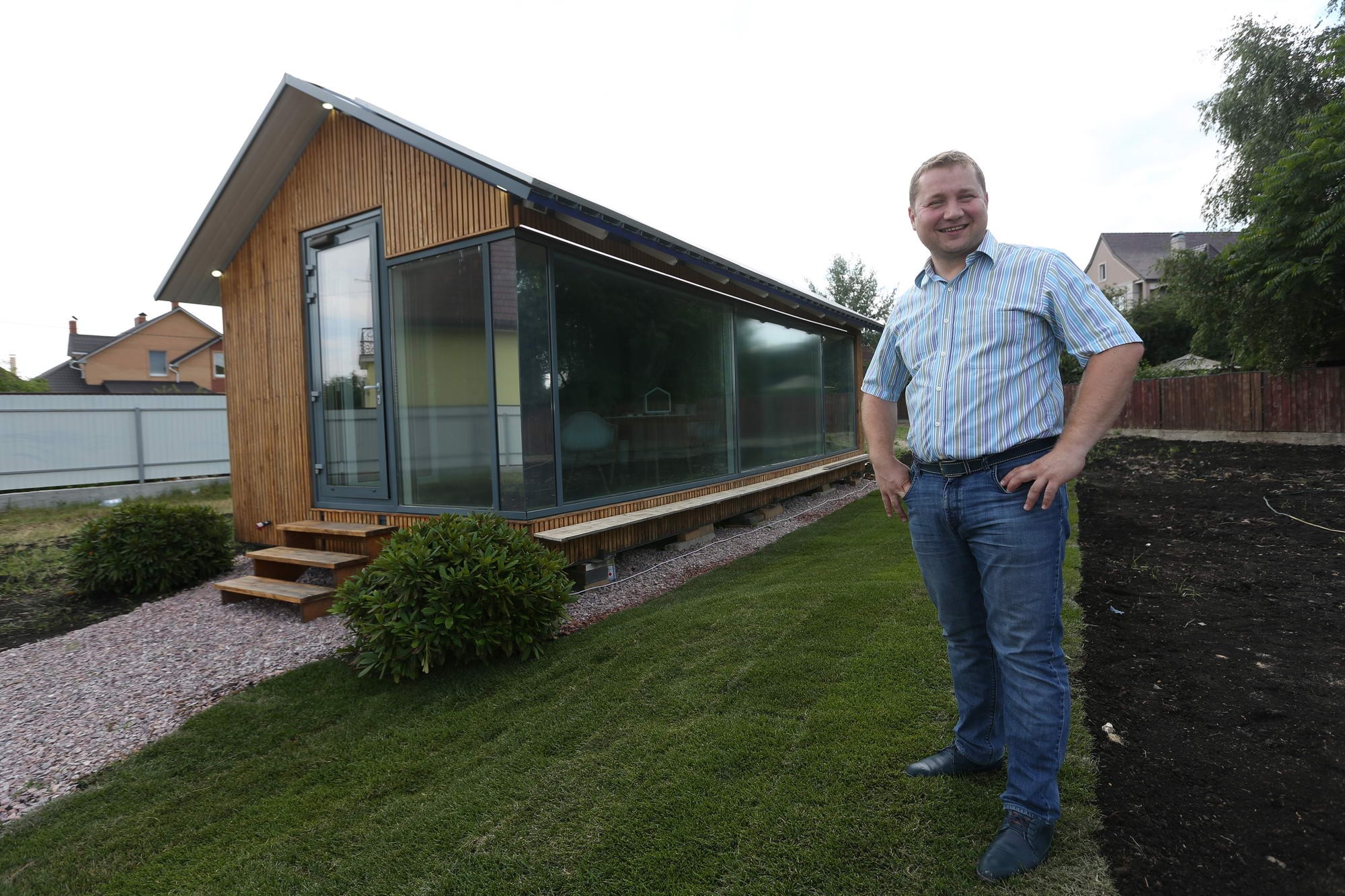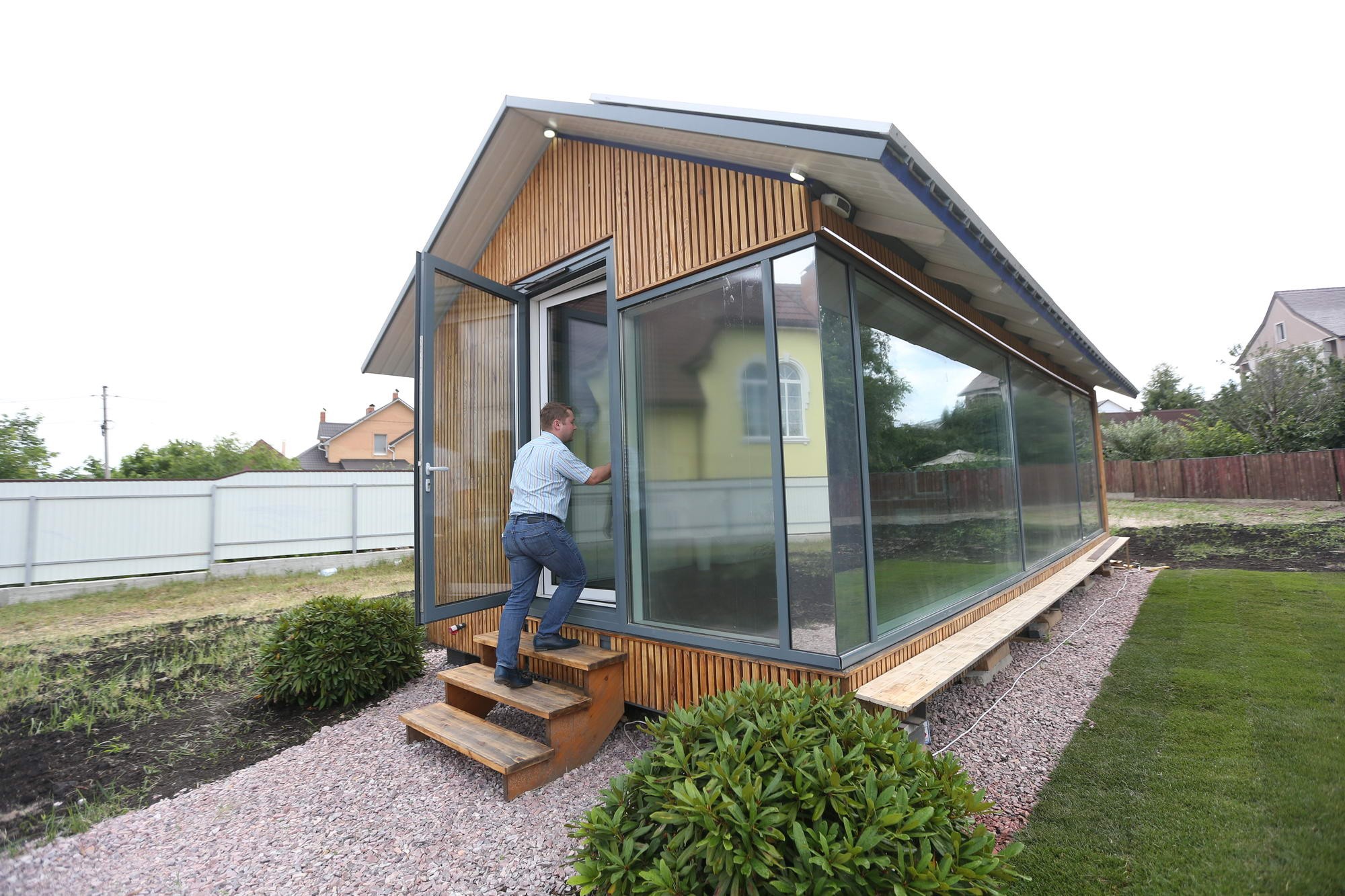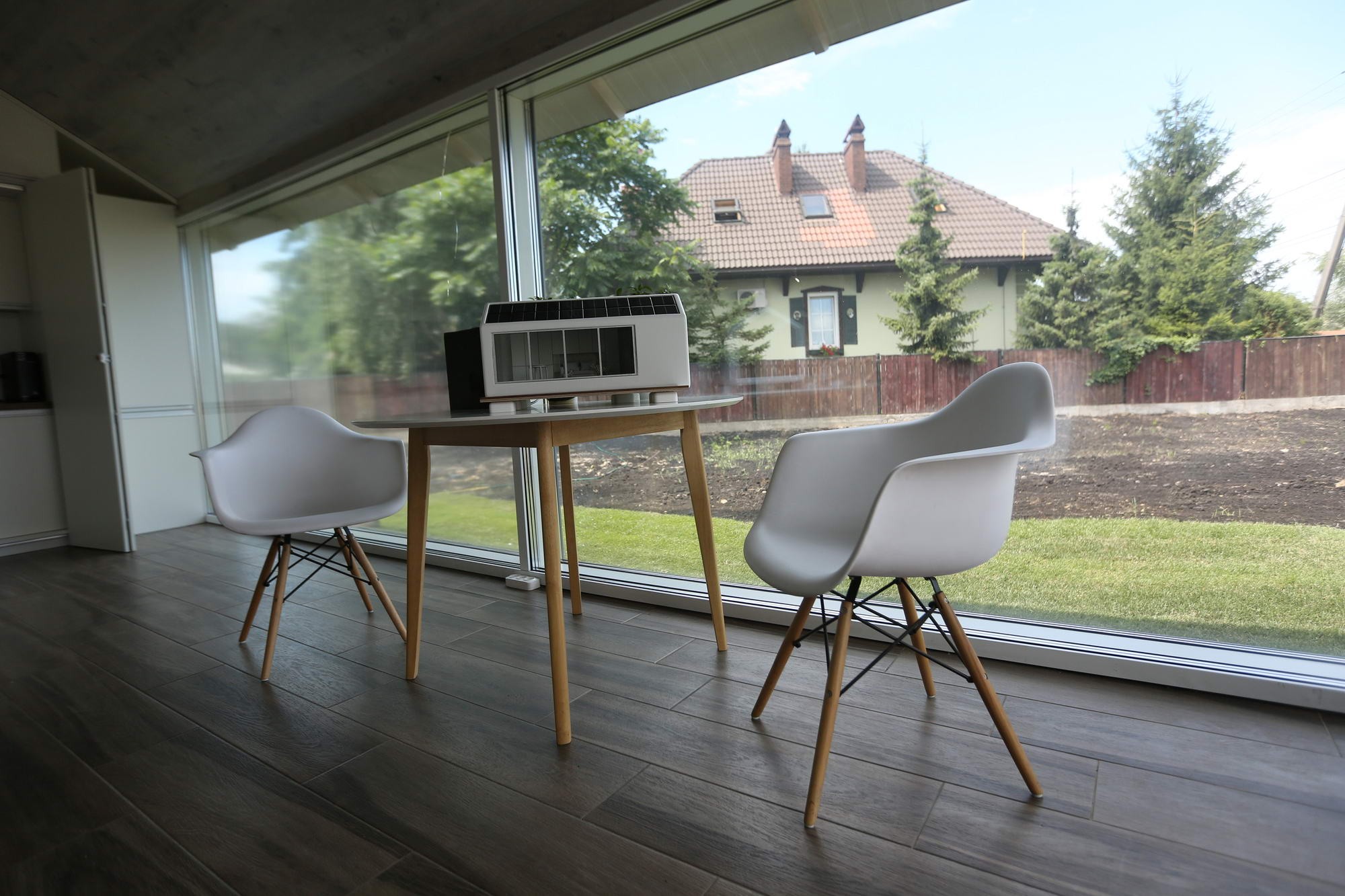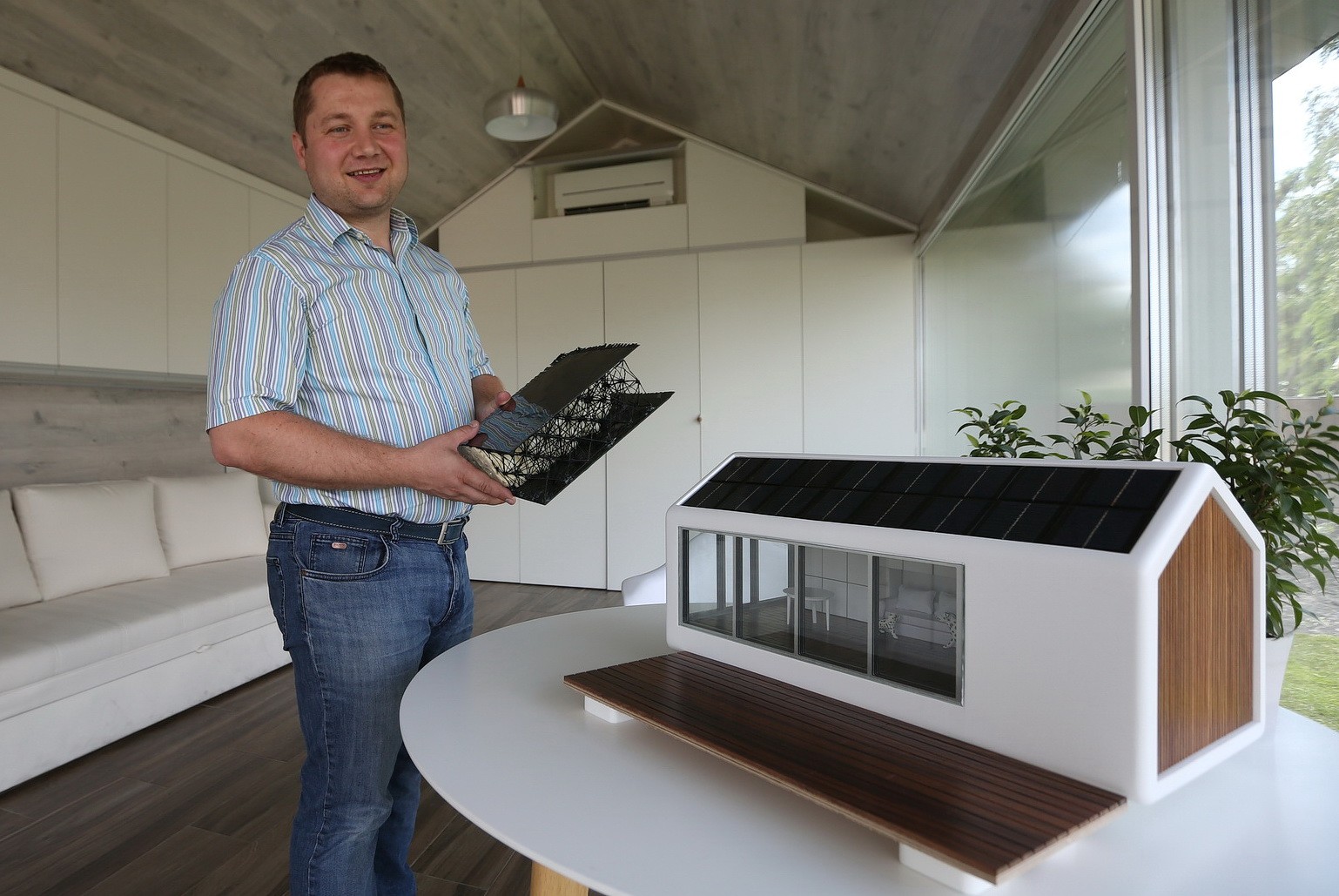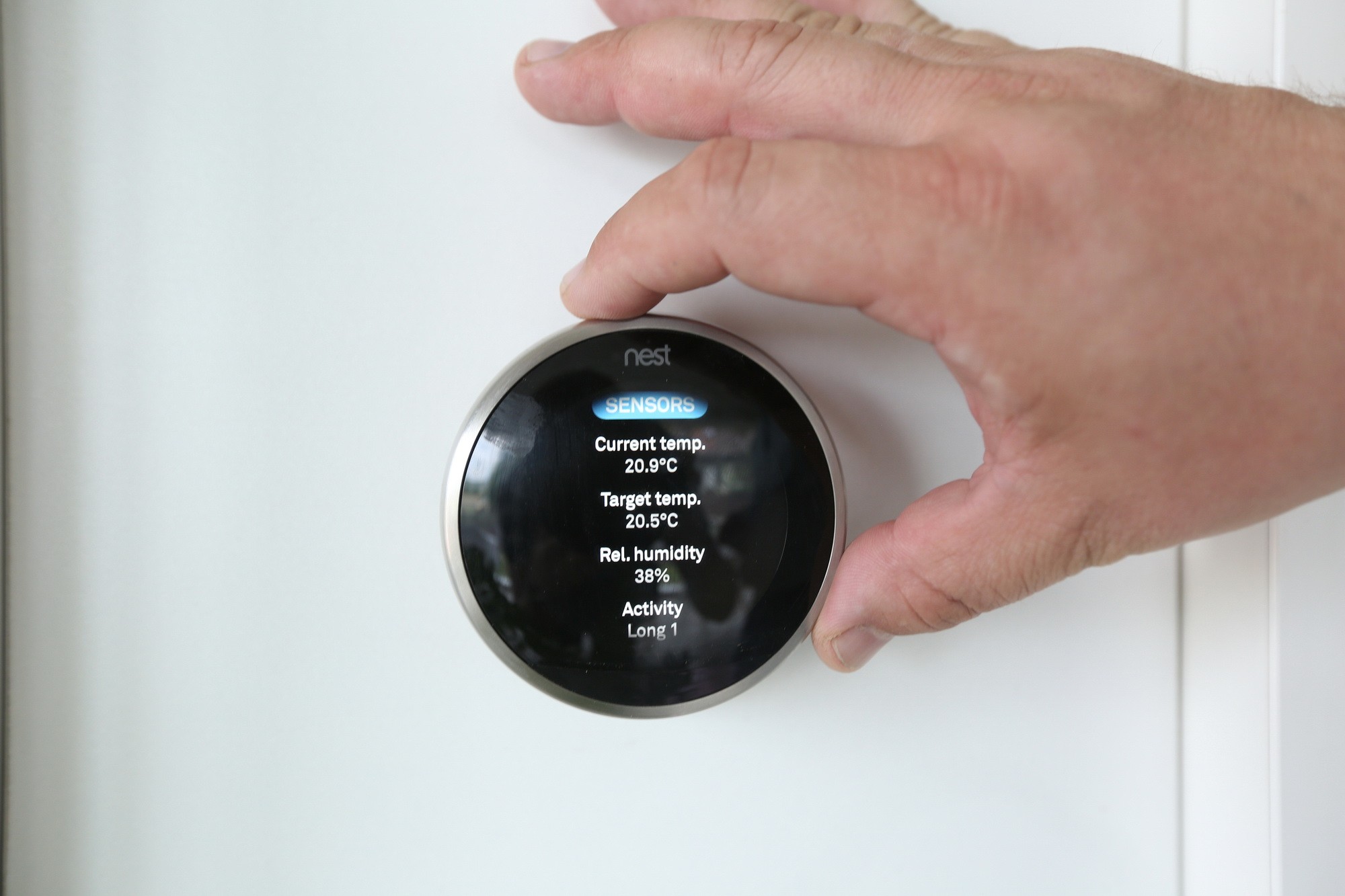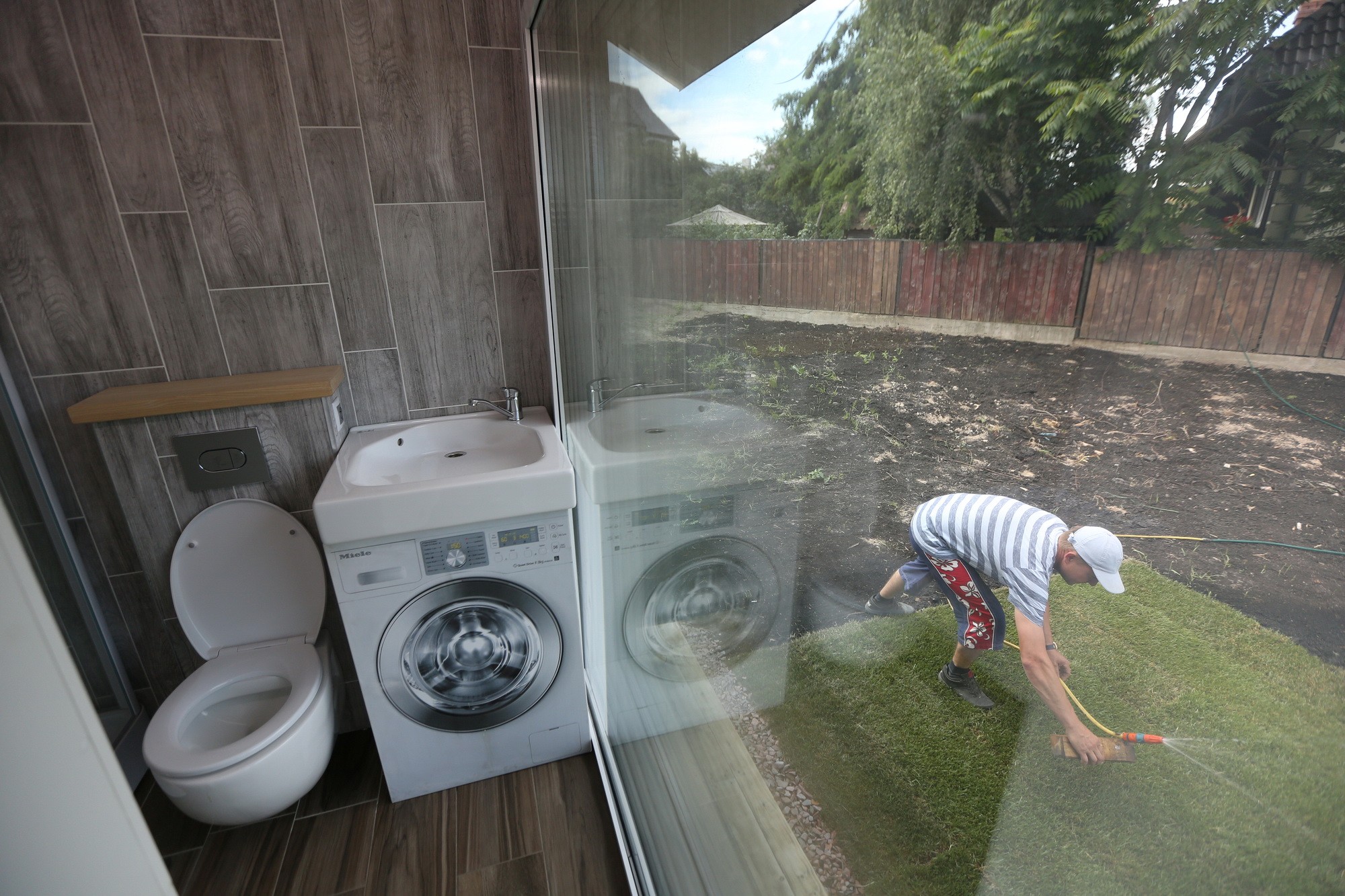Imagine being able to buy a house, have it built on any piece of land you have access to, and then moving in — all in one day.
Moreover, the house generates its own power from solar panels on the roof, comes with in-built, off-the-grid sewage and plumbing, has its own climate control system that keeps it at just the right temperature year-round, and it’s built of non-corrosive, recyclable materials guaranteed to last at least 40 years.
On top of all that — many of the parts of the house are created by a 3D printer.
It may sound like something from the future, but 7,000 people are already on a waiting list to receive such a house that Ukrainian techies are now working to supply.
Their startup, PassivDom, builds the off-grid smart-homes, which at the moment come in two options — a small 36-square-meter unit and a 72-square-meter “double” house consisting of two smaller modules put together to make a larger house.
According to PassivDom’s website, the full-feature small option costs $67,000, while a “standard” version (that requires connection to power, water and sewage lines) costs $44,400. A bare-bones small version of the home, with no furniture, kitchen unit or bathroom, goes for $33,000.
The large, double options sell for $108,000 for the off-grid and $85,300 for the standard and bare-bones versions.
3D-printed walls
PassivDom’s team of 10 people use 3D-printing to create the house frame, walls, roof and ceiling, floor and other parts. According to PassivDom CEO Maxim Gerbut, this is cheaper and more efficient than traditional construction techniques.
“We’re challenging conservative builders and technologies,” Gerbut told the Kyiv Post. Gerbut has spent 15 years working on smart-homes in Ukraine and says “it’s a long and expensive process to build by hand. Mechanization speeds up the process and makes it much less expensive.”
Gerbut says most heat in conventional houses is lost through joints. So the frame of a PassivDom is one solid part, printed in one go. And the company says the walls, built of combination of a carbon-based material and fiberglass, are six times stronger than steel.
“It is like a seven-and-a-half-meter-thick brick wall — imagine how warm a house with such walls is,” Gerbut said, adding that the house’s large windows are also made of thick glass, which also retains heat. PassivDom has even patented the technology for manufacturing such windows.
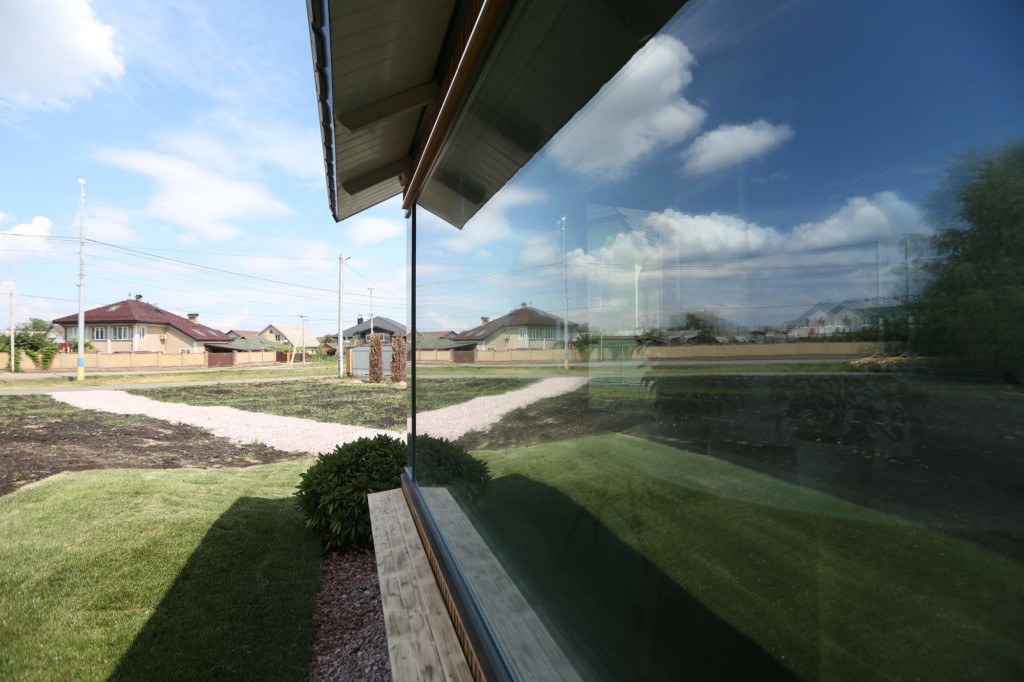
One of the PassivDom smart houses awaits its first dwellers on the outskirts of Kyiv — its developer PassivDom is going to place an ad on the Airbnb and booking.com websites so that people can rent it. (Kostyantyn Chernichkin)
Once printed and glazed, however, the house still requires extra fittings to be installed by hand, including interior panels and doors, plumbing and wiring, and household appliances. The furnishing is from IKEA. The heating, air conditioning, alarm and other controls can be accessed via a smartphone application.
We’re challenging conservative builders and technologies.
Every part of the house is recyclable, its inventors claim.
And it only takes a day to set up and completely assemble the house, so the owners can move in in the evening, PassivDom says. No fixed foundations are needed, so there is no need for building permits, either.
Energy efficient
PassivDom houses are 100 percent energy-independent, using solar panels installed directly into the roof to generate power. Plumbing and sewage is also in-built, and doesn’t require mains connections.
The electricity generated by the solar panels on the roof powers household appliances, lighting, air conditioning and the underfloor heating system. Excess solar power is stored in a battery bank.
As the walls and windows of the house are so well insulated, very little power is required to maintain a stable temperature inside, according to Gerbut.
He said a PassivDom uses 20 times less energy than a conventional house, so the energy generated by the solar panels and stored in the battery bank will see it through any winter — even a gloomy one.
“Five people inside one of our houses will heat it with their breath alone, and the building will maintain its temperature even if the power is off,” Gerbut said. He said that even in temperatures of minus 20 degrees Celsius outside, it will only take 10–15 percent of the solar panels’ generating capacity to heat the house.
“And even if the panels aren’t generating any power at all, the built-in spare battery can keep the house warm for a week in such weather conditions,” he said. In fact, PassivDom also offers a tongue-in-cheek “Zombie Apocalypse” package, which along with other extra features, includes bullet-proof glazing, an alarm system, extra toilet paper storage, and a Bible.
The smart environmental control system, the code for which was custom-written by PassivDom’s programmers, monitors air quality and automatically adjusts air conditioning. Sensors monitor levels of oxygen and carbon dioxide in the house, and sniff for dangerous gases like carbon monoxide.
With all the gadgets in the house connected through an application to the homeowner’s smartphone, any appliance can be turned on or off remotely.
“We know practically everything about all the things in the home that consume water and energy; we know how frequently you use your microwave, coffee machine, and fridge,” Gerbut said.Gerbut says computer algorithms manage everything in PassivDom houses, and the data from the house is sent online to a larger network supervised by the PassivDom team. This, the inventor says, will help the team monitor appliance performance prevent any possible breakdowns.
Gerbut says computer algorithms manage everything in PassivDom houses, and the data from the house is sent online to a larger network supervised by the PassivDom team. This, the inventor says, will help the team monitor appliance performance prevent any possible breakdowns.
“Users, however, won’t have control over most of it, though,” he said. “Unfortunately, people are much worse at managing energy and being energy efficient than algorithms.”
Water supply
Apart from generating their own energy, the smart-homes produce their own water — from the air.
A built-in reservoir holds 1,000 liters of water, some of which the house generates itself, by condensing out moisture from the air. The system generates 10–15 liters daily, although the developers aim to increase this to 30 liters per day.
However, most of the water is recycled — once used, it is collected, filtered and returned to the reservoir.
The houses also feature an independent, off-grid sewage system.
Mass production
Gerbut’s put his own money into developing the PassivDom smart-home — according to U.S. technology industry news websiteTechCrunch, Gerbut put 200,000 euros of his own cash into developing the first prototypes. Now, however, Gerbut has some investors, enough to ramp up mass production in the United States.
In fact, the company has moved to the United States, leaving only research and development office in Ukraine.
In America, the air is filled with investment, people tend to put money in innovations.
However, the Ukrainian-created modular houses can be transported anywhere. The homes, which are about the same size as a standard shipping container, will fit on the back of a truck.The startup aims to manufacture and deliver the first houses to their owners in the United States in October this year.
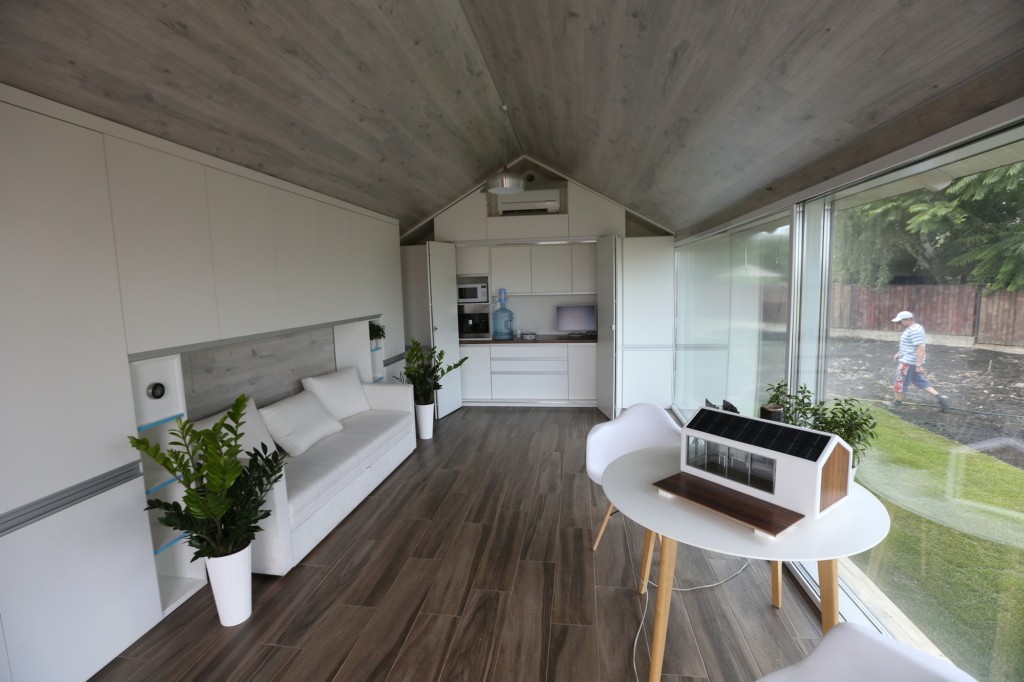
The interior of a PassivDom smart house located in Kyiv. (Kostyantyn Chernichkin)
The startup aims to manufacture and deliver the first houses to their owners in the United States in October this year.
As the PassivDom team started in Ukraine, the first prototypes will soon be made available to the public. The company will place the house on the Airbnb and booking.com websites, and offer it for rent.
“You’ll just get in, turn it on, and enjoy it.”
